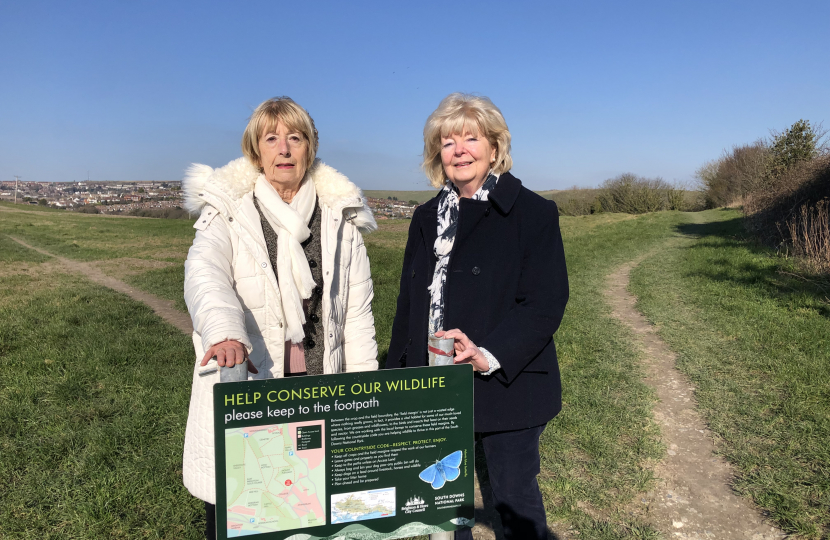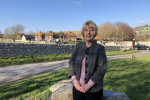
It is often forgotten that Brighton and Hove City Council’s boundaries do not stop where the built up urban area ends: The local authority’s boundaries in fact extend many more miles deep into the South Downs National Park, with the Council’s rural estate consisting of approximately 12,800 acres.
The Council acquired this estate in the late 19th and early 20th century, with the aim of protecting the water supply and controlling development and it has stayed within the boundaries of the city ever since, including through unification of the Brighton and Hove boroughs 25 years ago.
The Council is therefore manager and custodian of a rural quarter, extending from Cockroost Bottom north of Portslade in the west, through the northern Benfield Valley above Hangleton; Waterhall, Braypool and Stanmer Park, right across to Coombe Bottom north of West Saltdean.
It means that Councillors that represent the outer wards of our City such as Patcham and Rottingdean Coastal wards, need an appreciation not just about the concerns of their residents in the urban areas, but also about the issues in the rural fringe of Brighton and Hove.
The Conservative Group brought the issues of Brighton and Hove’s rural quarter to the forefront of the Council agenda at this week’s Council meeting, raising serious concerns from farmers and also public concerns about litter along transport corridors impacting the beauty of the South Downs National Park.
Councillor Robert Nemeth and Councillor Anne Meadows brought attention to how loyal and long-standing farmers in the city currently feel ignored by the Council over its approach to its policy planning exercise for the rural Brighton and Hove called the City Downland Estate Plan. Specifically the farmers feel that their voice has been progressively drowned out as the Council has included more and more inner city campaign groups on its working groups and consultation exercises.
The Downland working group started off as a small reference group which was well balanced, including two farming representatives, the South Downs National Park Authority, Local Access Forum, National Trust and Sussex Wildlife Trust. However the Council has steadily widened its group of stakeholders consulted to now include groups such as Extinction Rebellion. This has diminished the voice of farmers who now feel that the process has been stacked against them and are concerned about land grabs by the council.
At the Council meeting this week, the Conservatives asked the council to acknowledge the concerns of farmers about disproportionate consultation with lobbying groups during the Council’s City Downland Estate Plan and take urgent steps to be taken to address the concerns of farmers through extensive consultation prior to any votes taking place on the final City Downland Estate Plan.
At the meeting, the Conservatives also drew attention to a second issue impacting the rural quarter of Brighton and Hove – the state of the A27 which passes through the area.
A wall of litter lining Brighton’s arterial A27 road has left the road verge in its worst ever condition and the Council must do more to clean it up.
The litter, which has been building up for months if not years at many points, is made up of bottles, takeaway food; containers; and also plastics associated with construction materials.
There are concerns not only about the visual appearance of this arterial road which passes through the Brighton and Hove unitary authority area, but also of pollution and the impact on wildlife through this section of the South Downs. It is the Council’s responsibility to organise litter clean-ups along the A27 and to request permission to do this from National Highways for access etc. but this has not been done now for some time and the litter has built up to an unacceptable level.
Patcham Ward Councillors Anne Meadows, Alistair McNair and Carol Theobald, who inspected and cleaned up the entrance to Braypool Lane recently, told the Council meeting that the Council should be doing much more to address the issue, bringing forward a motion to request a plan of action.
Cllr McNair and Cllr Theobald said that the council should be Coordinating and organising more regular clean-ups so as not to allow rubbish to build up for years; Communicating with the construction industry to encourage netting of the back of trucks to stop plastics flying out; installing CCTV cameras at hotspots as a deterrent and to issue penalty fines; installing signage to discourage littering and show penalties, to give more of a sign that the City cares about littering and its impact.
There is much to do to protect Brighton and Hove’s rural quarter and the Conservatives will make sure that these issues are heard loud and clear.



